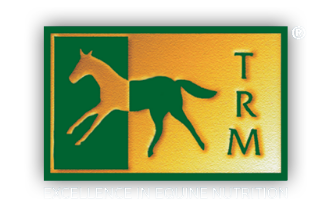
Equine Mobility: A Functional Perspective on Performance and Welfare through Nutrition
By TRM Chief Scientific Officer Purav Shah (M.Sc. (Hons), B. Pharm)
Why Mobility Matters
Mobility in horses is more than just locomotion—it’s an integrated system involving the neuromuscular, musculoskeletal, and fascial networks working in concert. Optimal mobility supports performance efficiency, injury prevention, and long-term functional soundness.
As equine professionals, it’s time to evaluate mobility not only in terms of range of motion, but also movement quality, symmetry, and adaptability under load and over time.
At its core, mobility is dynamic stability: the ability of a horse to move freely and purposefully while maintaining control and biomechanical integrity.
Key components for healthy mobility include:
• Joint range of motion (ROM) – especially in the thoracolumbar spine, pelvis, and limbs
• Neuromotor control – proprioception, reflexes, and balance
• Muscle recruitment patterns – strength, symmetry, and timing
• Fascial glide – elasticity and freedom of the connective tissue networks
Compromise in any of these systems can lead to compensatory patterns, performance decline, or chronic overload injuries like suspensory strain, SI dysfunction, or kissing spines.
Supporting Movement with a Multi-Faceted Therapeutic Approach
Enhancing mobility involves a multi-modal plan to support the whole horse by integrating:
• Manual therapies – bodywork such as myofascial release, chiropractic, osteopathy
• Active mobilization exercises – baited stretches, pole work, balance pads
• Adjunctive modalities – PEMF, laser, shockwave, and therapeutic ultrasound
• Strength and proprioception training – core engagement, terrain variation, hill work
• Nutritional support – omega-3s, glucosamine, hyaluronic acid, and appropriate antioxidant support.
When integrated cohesively, these approaches contribute to the development of a more resilient and adaptable equine athlete.

Feeding for Freedom with the Nutritional Foundations of Mobility
Maintaining mobility means working at cellular levels in maintaining healthy connective tissue, joint fluid viscosity, and neuromuscular efficiency.
Here’s where key supplements come into play:
1. Glucosamine & Chondroitin Sulphate
• Fundamental for cartilage repair and maintenance.
• Slows enzymatic degradation of joint tissue.
• Most effective in long-term, proactive use.
2. MSM (Methylsulfonylmethane)
• Reduces discomfort and is a sulphur donor
• Supports collagen synthesis and joint comfort
3. Hyaluronic Acid (HA)
• Increases synovial fluid viscosity
• Promotes shock absorption and joint lubrication
4. Omega-3 Fatty Acids (EPA/DHA)
• Modulate systemic discomfort
• Support joint, tendon, and even neurological health
5. Vitamin E & Selenium
• Crucial for neuromuscular function
• Vital for horses with restricted access to fresh forage or those experiencing elevated levels of oxidative stress
Using these nutrients alone or in combination can lead to a meaningful and measurable improvement in mobility and overall comfort.
Mobility and the Brain–Body Connection
Chronic discomfort and mobility limitations can also alter neurobehavioral states. Horses with restricted mobility may exhibit learned helplessness, behavioural resistance, or generalized anxiety. Restoring functional movement often improves both physical and mental health outcomes.
Conclusion
Mobility is a primary determinant of a horse’s performance ceiling and welfare baseline. By addressing and prioritizing mobility as a dynamic, modifiable trait – rather than waiting for breakdown – we empower horses to move, perform, and age with greater resilience and grace.
To support your horse’s movement from the inside out, explore TRM Nutrition’s range of mobility and tissue support supplements:
• STRIDE HA
• STRIDE and STRIDE MP
• GLUCOFLEX
• Omega 3
• Vita-E- Plus






